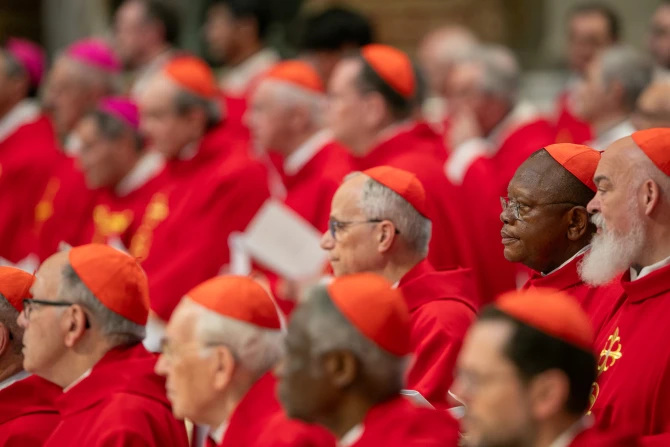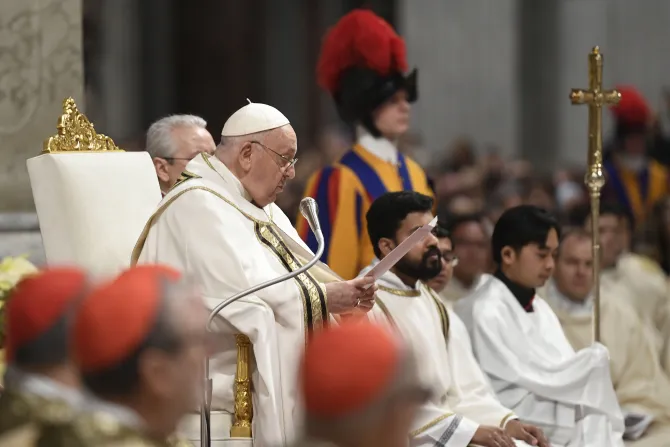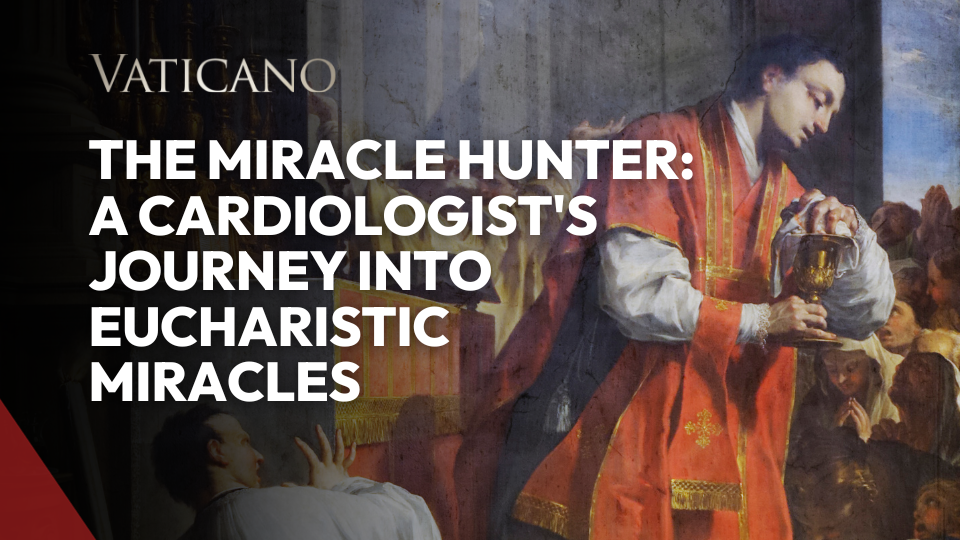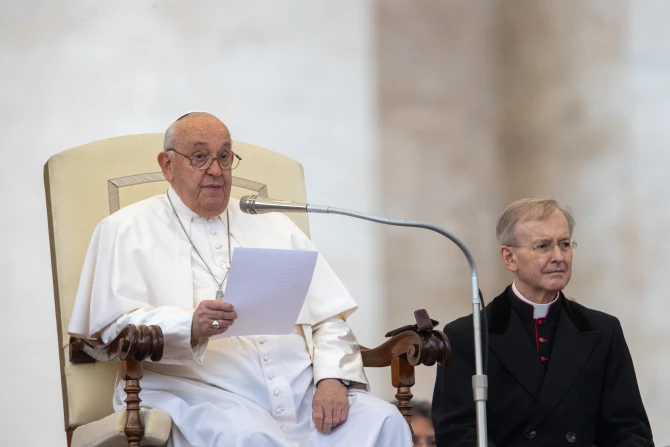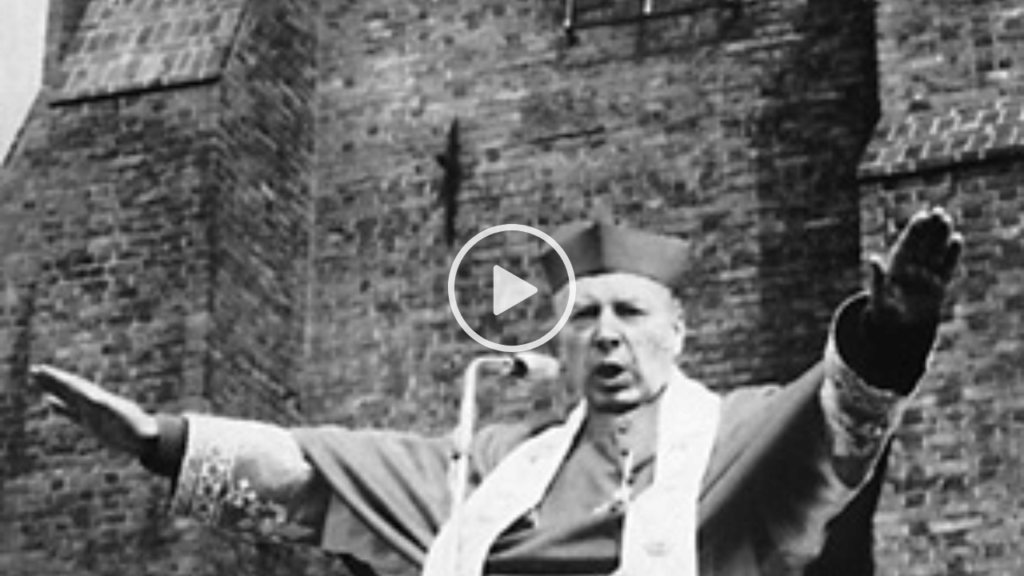For the first time in 150 years, the Chair of St. Peter, one of the Vatican’s most sacred treasures, has been removed from Gian Lorenzo Bernini’s monumental reliquary for public veneration. This historic wooden throne, known as the Cathedra Sancti Petri, holds immense spiritual and historical significance, symbolizing the authority and mission of the papacy.
A Relic of Faith and Leadership
The origins of this wooden throne trace back to the 9th century. According to tradition, it was a gift to Pope John VIII in 875 from Charles the Bald when he traveled to Rome to be crowned Emperor of the Romans.
Scholars have studied the chair extensively over the years, revealing that its oldest components date as far back as the 6th century. Revered for centuries, it is known as the Cathedra Sancti Petri.
To help us understand the meaning behind this expression, we spoke with Fr. Dominik Jurczak, OP, who serves as the Dean of the Faculty of Theology at the Pontifical University of Saint Thomas Aquinas, the Angelicum in Rome:
“The Cathedra is the place where the pope sits and our faith tells us that St. Peter would sit on the very same spot. Remember that the pope is also the Successor of Christ therefore, we want to see in this cathedra first and foremost our spiritual point of reference.”
Father Dominik continued, “This is the place from which the pope teaches, and in his words, in the perspective of searching for hope and leading us out to full freedom, we want to hear once again the words of Christ himself, but also the teaching of the Church that speaks to us through the ministry of Peter, the ministry of the pope.”
Each year, on February 22nd, we celebrate the Feast of the Cathedra Sancti Petri, the “Chair” of Peter. This wooden throne holds deep spiritual significance, representing a special sign of God’s love—a symbol of His desire to gather the entire Church and guide us all along the path to salvation.
The wooden seat of Saint Peter is far more than just a chair; it is one of the most precious relics treasured by the Vatican and the Church.
Prof. Francesco Buranelli, President of the Commission for the Protection of Monuments of the Holy See, clarified, “It is a relic because it gains its value from the faith that people invest in it. Undoubtedly, even if the tradition does not trace it back to the very origins of the papacy, it has been documented and present in the Vatican since at least the ninth century. It has been the cathedra of many Supreme Pontiffs, and as such, it possesses its own sanctity.”
Spiritual Significance of the Cathedra Sancti Petri
Nevertheless, the Chair of Saint Peter is much more than a relic itself. It is a symbol. A bridge that brings us to Christ.
Fr. Dominik furthered our understanding, saying, “We never celebrate relics as such. Every relic relates us to Christ. Just as we have relics of martyrs or saints. They relate us to an identification with Christ, to a perfect identification with Him. We don’t celebrate relics, but venerate them, like in the case of the relics of the martyrs whose lives were completely conformed to Christ.”
The relic of the wooden throne of Saint Peter, a piece of history of an inestimable value, is enclosed in a famous sculpted gilt bronze casing, an iconic work of art, designed by Gian Lorenzo Bernini and constructed between 1647 and 1653.
“The very fact that it was placed within that monument gifted to us by Bernini is evidence of a veneration that no other cathedra in the world can claim. This veneration dates back at least 400, nearly 500 years,” noted Prof. Francesco Buranelli.
“It can be presumed,” he continued, “that it was used as the papal throne until the 1600s, that is, until the time it was enclosed within Bernini’s monument.”
This reliquary, shaped like St. Peter’s Chair, encases the wooden throne and is surrounded by a stunning stained-glass depiction of a dove representing the Holy Spirit, alongside sculpted angels and statues of four Doctors of the Church—Saints Augustine, Ambrose, John Chrysostom, and Athanasius—symbolizing the unity of Christian teaching across East and West.
The Cathedra Sancti Petri, a profound symbol of the unbroken line of succession from St. Peter to Pope Francis, was last displayed publicly in 1867 to mark the 1800th anniversary of St. Peter’s martyrdom.
On October 27, by decision of the Holy Father, the newly restored chair was once again unveiled. Following the concluding Mass of the Synod on Synodality, it was prominently placed before the baldachin.
Buranelli explained, “It was the Pope who initiated, desired, and accomplished this because it is undoubtedly one of the symbols of an upcoming special year, a Jubilee that aims to restore unity to a Church that today is divided, with conflicts in Ukraine, in the Holy Land, and among brothers, etc.”
He further said, “We need strong symbols, and the Cathedra is one of those that are explained and should become symbols of a people on a journey. We must break down these artificial barriers that hinder dialogue because if we all start isolating ourselves, we lose that concept of community which is fundamental to civil life.”
In 2012, Pope Benedict XVI described the Chair as “a symbol of the special mission of Peter and his successors to shepherd Christ’s flock, keeping it united in faith and charity.”
A Rare Opportunity for Pilgrims
Today, pilgrims and visitors can witness this rare piece of history displayed directly in front of the basilica’s main altar, above the tomb of St. Peter, where it will remain until December 8th, the Solemnity of the Immaculate Conception.
Adapted by Jacob Stein


